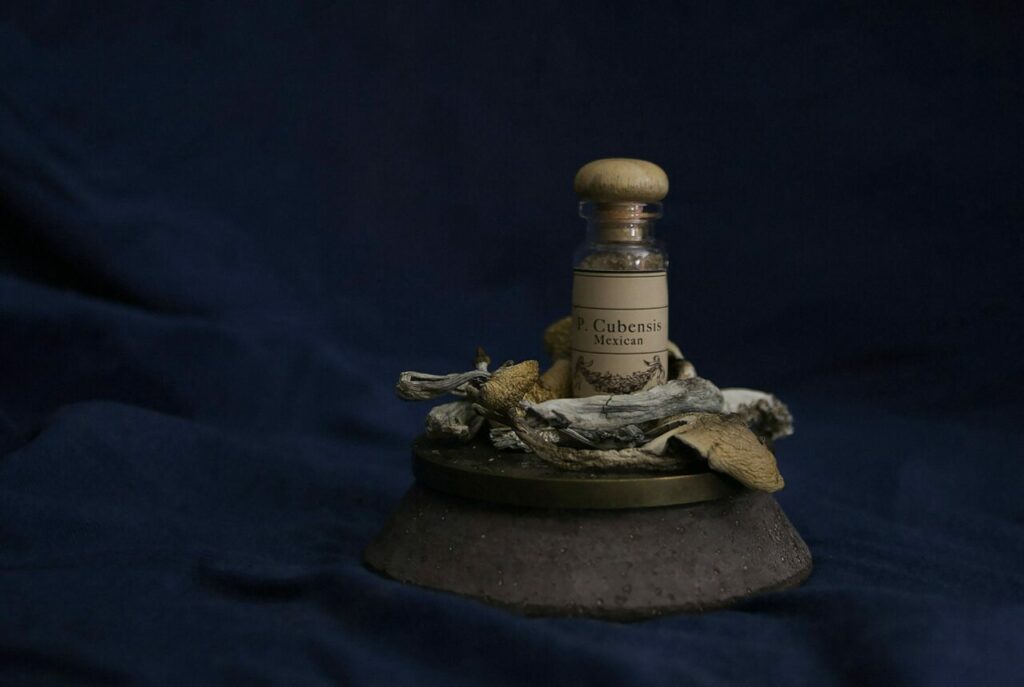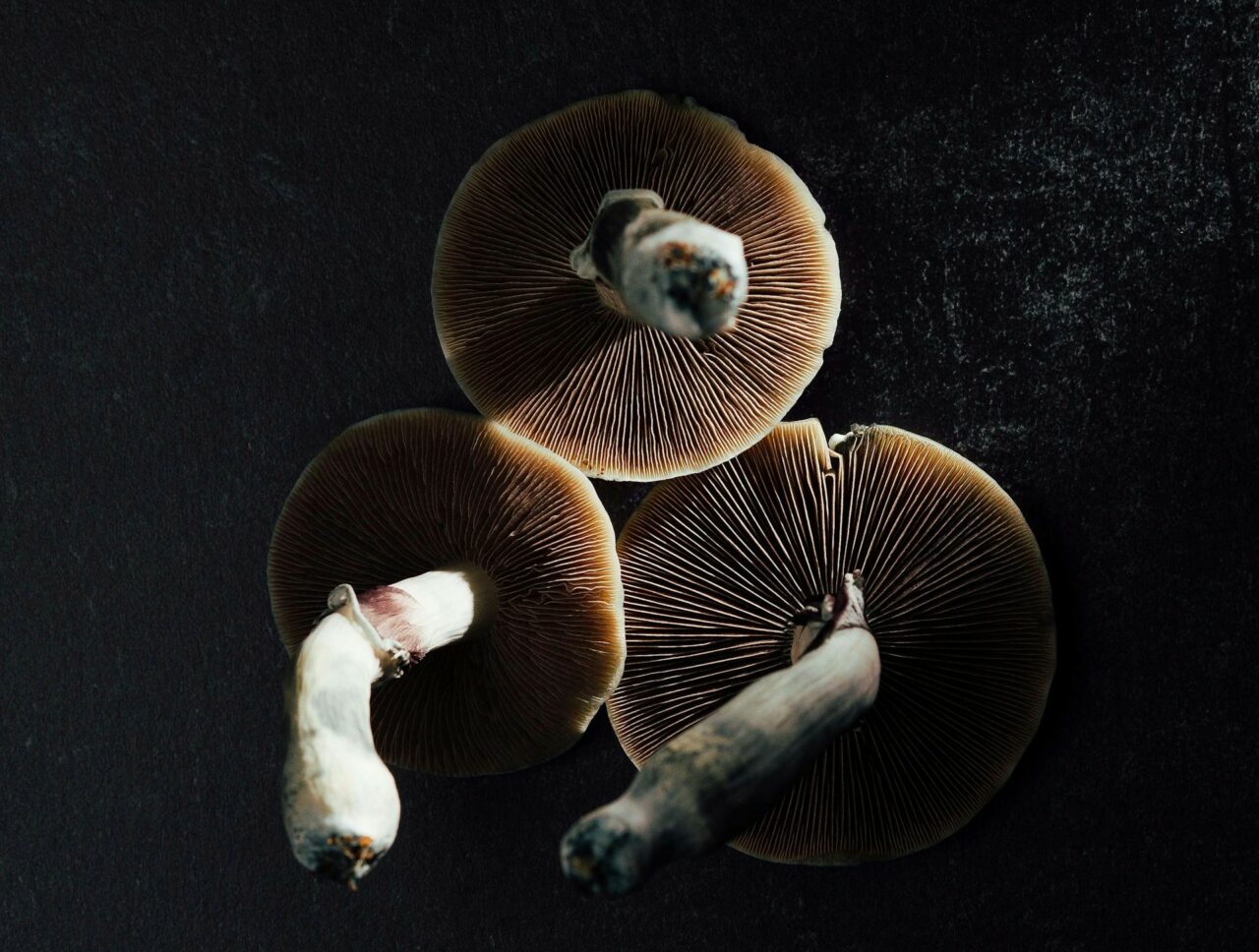The burgeoning interest in naturally occurring magic mushrooms in Canada is paralleled by a rise in the popularity of lab-synthesized psilocybin products. These lab-made products are favoured by many researchers for their consistent dosage. However, it’s worth noting that naturally sourced mushrooms can potentially be more potent than their synthesized counterparts. Indeed, experts point out significant variances between the two, including differing potency levels.

Key Takeaways:
- More than 180 species of natural mushrooms offer varying potencies, influenced by factors such as species type, consumption method, cultivation practices, and individual tolerance.
- Manufactured in controlled settings to ensure consistency and purity, synthetic psilocybin is a lab-created version of the natural compound, particularly used in mental health treatment research.
- The combined effects of various compounds found in psychedelic mushrooms, such as psilocin and baeocystin, can lead to a more profound and intense experience than any single compound on its own.
Expanding Market: Different Forms of Psychedelics
Psilocybin mushrooms are gaining rapid popularity in Canada, particularly for their potential in treating specific mental health disorders such as OCD, depression, PTSD, and anxiety. In response to this growing interest, provincial governments are starting to contemplate the decriminalization of their recreational use.
Canada authorized limited medical usage of these mushrooms in 2020 under specific conditions. Further, just last year, the federal government permitted certain terminally ill patients to use these substances for symptom management.
Such progressive steps have paved the way for the advent of synthetic psychedelics.
Ongoing Discussions
The ongoing debate comparing organic and lab-made psychedelics revolves around safety, accessibility, and cost considerations.
Many believe that natural psychedelics provide a more holistic and traditional experience. Conversely, supporters of lab-made versions emphasize their suitability for standardized medical applications, along with assured dosage control and quality certainty.
Despite the potential for lab-created psychoactive substances to increase availability, concerns linger about potential drug monopolization. Critics warn that this could result in less
Increased accessibility can lead to elevated costs for users.
/wp:paragraph –>A Comprehensive Guide to Psilocybin
Psilocybe cubensis, a variety of magic mushroom, is one of many naturally existing psychedelic substances found today. Magic mushrooms, recognized for their psychoactive effects, are available in diverse strains such as Golden Teachers, Amazonian Cubensis, Blue Meanies, and more, with Psilocybe cubensis being the most popular.
The Psychedelic Process Explained
Psilocin, a derivative of this mushroom, changes into a distinct chemical once metabolized by the liver. This transformed compound interacts with the brain’s serotonin receptors, specifically the 5-HT2A receptor.
The 5-HT2A receptor plays a pivotal role in the regulation of mood, cognitive functionality, and perception. The interaction between this receptor and the transformed compound disrupts the usual functioning of serotonin pathways, leading to modifications in visual and auditory perception, thought processes, and emotional states. This alteration results in an uplifted mood, enhanced creativity, introspection, and the experiences known as “psychedelic”.
The Two Main Categories
| Natural | Found in over 180 species of fungi, the potency of these substances depends on the mushroom species. Psilocybe cubensis is a prevalent variety. The effects can vary depending on consumption methods, cultivation techniques, and individual tolerance levels. |
| Synthetic | These are manufactured in labs and are chemically identical to their natural counterparts. Created in controlled environments for ensuring consistency and purity, these substances are increasingly being explored for clinical uses, particularly in the realm of mental health treatments. |
The Fundamental Differences Between Nature’s Offering and Science’s Invention
Indigenous communities in North and South America have traditionally used natural versions of these drugs, found in specific species of magic mushrooms, in their rituals and ceremonies, attributing them with sacred or divine qualities.
- Obtained from plants and mushrooms
- Implemented in ancient rituals and healing methods
- The unique genetic composition of each strain influences its potency
On the other hand, a
synthetic drug is These substances are designed to mirror the natural chemical structure of a specific compound. They are painstakingly produced by proficient experts in regulated settings to guarantee precision. Although they function in a way similar to natural drugs, they have the potential to alter the entire psychedelic experience.
- Produced by adept pharmaceutical experts
- Recent advancements aimed at medical applications
- Clearly defined potency due to the controlled manufacturing process
Organic substances present more advantages due to their bioactive compounds. Various types of mushrooms can possess different levels of psilocybin and other compounds, resulting in a range of effects.
Researcher Insights
A study carried out at the Hebrew University showed that psychedelic mushrooms have a more potent and long-lasting effect on synaptic plasticity than their synthetic counterparts. The research team explored how the drug affected the mice’s brain activity by observing changes in behavior and specific brain chemicals.
The research discovered that the extract reduced head twitches and promoted the formation of new brain connections. This suggests that mushroom extract could offer more benefits than a single compound.
The researchers also introduced the concept of the “entourage effect”. They described it as the scenario where the collective influence of multiple compounds in psychedelic mushrooms could exceed the effects of individual compounds. In the context of mushrooms, psilocin, baeocystin, and other tryptamines may synergistically create a profound experience.
These additional chemicals are absent in lab-produced substances, which might result in subtle differences in effects, even when the psychedelic content is the same.
Expert Opinions on Nature’s Superiority
Research consistently shows that psilocybin, in any form, yields promising results for treating various psychiatric disorders. A study conducted in 2024 examined the effects of controlled substances on patients with treatment-resistant depression. The study observed symptom improvements after administering magic mushrooms.
When combined with other treatments, organic psychedelics could promote deeper emotional processing and insights during therapy sessions, thus enhancing long-term results.
Scientists from the same university found that hallucinogenic mushrooms boost synaptic plasticity. They possess a unique metabolic profile that impacts oxidative stress and energy production pathways, unlike laboratory-created psychedelics.
Market Consequences
The growing body of research on this subject could shape Canadians’ perceptions and purchasing behaviors towards psychedelics. Initiatives like the Special Access Program from Health Canada are showing hopeful signs of setting the stage for legalization and revolutionizing the therapy landscape. Psilocybin-assisted therapy could soon become a prominent treatment method.
Organic options are predicted to gain more importance in clinical trials and therapeutic settings. As the country progresses towards fully unlocking the potential of organic psychedelics, major breakthroughs in mental health therapies appear to be on the horizon.
Instructions for Safely Acquiring Shrooms in Canada
- Via Section 56 Exemption: Health Canada recognizes that patients with severe medical conditions might resort to psilocybin as a substitute therapy. This exemption is part of the Controlled Drugs and Substances Act.
- Clinical Trials: Initial clinical trials are authorized to investigate the drug’s potential in treating mental health issues. Participants must meet specific requirements and pass a physician’s evaluation.
- Online Market: Psilocybin capsules or edibles can be purchased from online vendors in Canada, but it is crucial to buy from reliable sources.
Uncover the Power of Natural Substances
Nature is full of marvels, and shrooms are one of them. Rather than turning to synthetic psychedelics, consider using naturally potent magic mushrooms from Canada. They are powerful and therapeutic. Browse the highest quality, naturally derived shroom strains at Mushroom Coffee Canada.
The shrooms we have available exceed standard expectations by maintaining their purest and most genuine form when dried. Place an order today and receive your chosen items discreetly and conveniently at your doorstep.
Frequently Asked Questions
What are baeocystin and norbaeocystin?
Both substances are tryptamine or indole alkaloids. They share a chemical similarity with psilocybin. As secondary alkaloids in shrooms, these tryptamine derivatives contribute to the overall psychedelic effect, albeit to a lesser extent. Baeocystin and Norbaeocystin have a similar chemical structure but differ in their psychoactive effects.
Are organic dried mushrooms present in capsules and edibles?
The nature of the experience may vary depending on the source. Online Dispensaries offer products abundant in organic compounds, providing a full entourage effect. On the other hand, synthetic compounds in capsule form are frequently used in clinical settings and trials.
Do natural psychedelics offer deeper experiences?
It’s worth noting that expecting a profound experience from natural psychedelics can indeed create such an experience. Our anticipations, part of the ‘set’, can influence the journey’s direction. Natural psychedelics are often linked with ceremonial traditions, and this ritualistic context can lead to uniquely fulfilling experiences. These experiences differ in several aspects from clinical sessions that use synthetic compounds.





